NYC's Long-Awaited Davis Center Opens in Central Park
A stunning new facility at Harlem Meer opens to the public this weekend!


Just south of the Brooklyn Army Terminal in Sunset Park is one of New York City’s infrastructure survivors: a floating barge freight train line that runs from the 65th Street Rail Yard to the Greenville Yard in Jersey City across the Hudson River. The New York New Jersey Rail, founded in 2005, is operated now by the Port Authority of New York and New Jersey. Although the line is only four miles long, it serves as a small, but growing critical link for freight in the New York region, and cements the city’s commitment to bringing industry back to the waterfront.
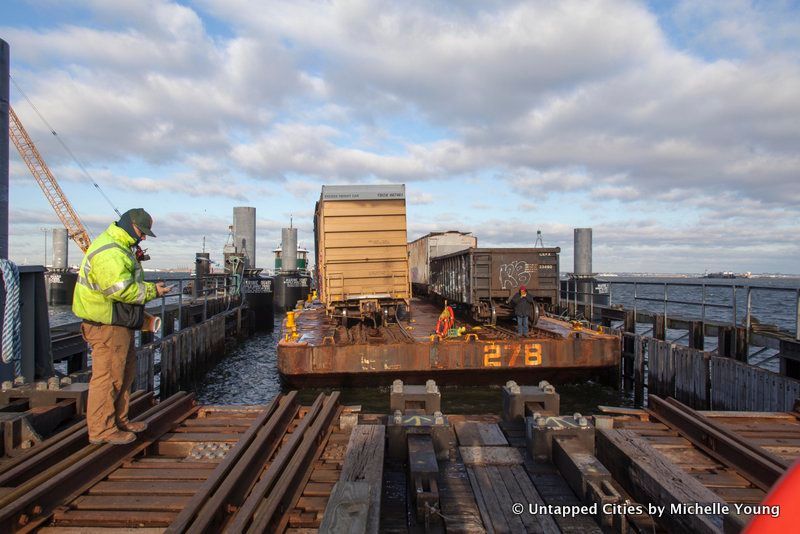
“We’re an anomaly. Out of the 500 railroads in the United States, the nearest one that looks like us in texture and feel is the Alaska railroad,” says Donald B. Hutton, Managing Director of the New York and New Jersey Rail tells us on a recent on site visit. The Port Authority bought the floating rail line in 2008 and the NYC Economic Development Corporation rebuilt the rail yard itself, which reopened in 2012, but many different railroads and companies have operated this line in the past, including the Pennsylvania Railroad. The last iteration, the New York Cross Harbor Railroad, moved much of the country’s cocoa.
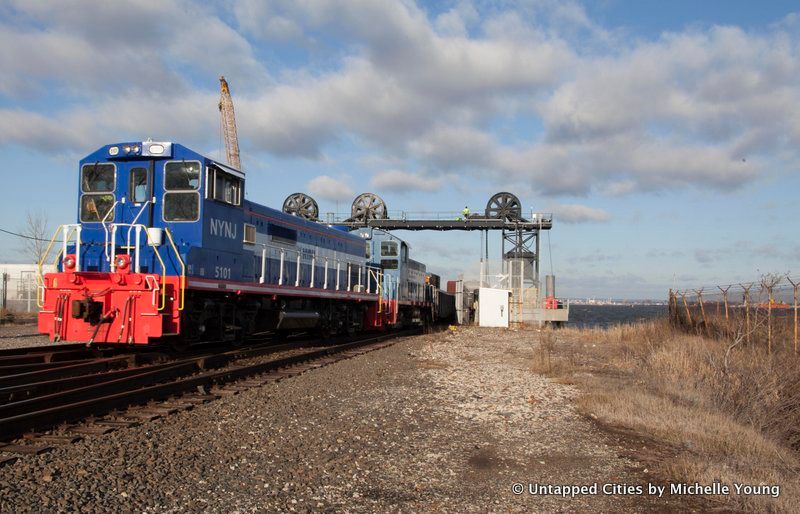
The current floats transport 14 train cars at once, an equivalent of 56 semi-trucks, on two tracks side by side, but new car floats are being built by the Port Authority that will have four tracks, accommodating 18 train cars (equivalent to 72 trucks) and providing faster unload and reload times. New York and New Jersey Rail transports a large amount of local lumber and building materials, as well as food products like soybean oil and Washington state apples, separated recycled materials from the SIMS Municipal Recycling Facility nearby and other solid waste like scrap metal. Special cargo have included New York City transit subway cars and oversize pieces for the Willis Avenue Bridge, which spans the Harlem River. “We’ve found a nice synergy where we load beer cars to the east [for sale and consumption] and recycled glass and empty beer bottles to the west, which are then recycled into new beer bottles,” says Jeffrey Brauner, the Principal Transportation Planner for the Port Rail Program at the Port Authority.
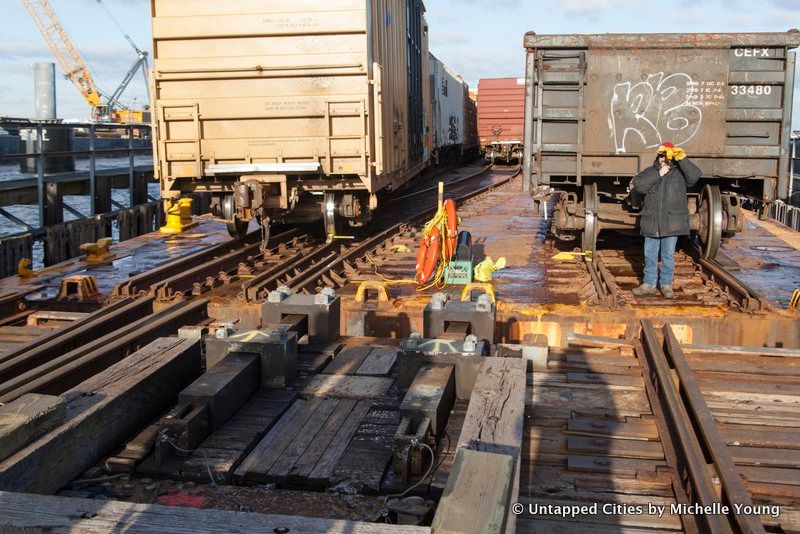
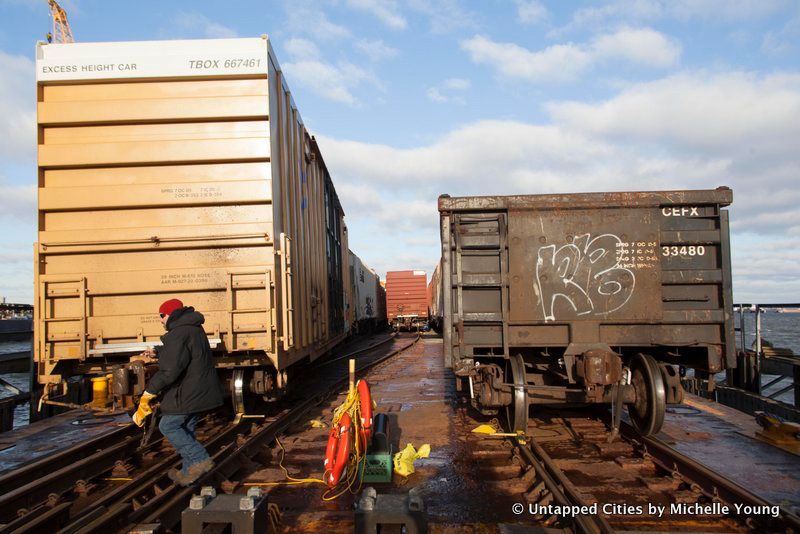
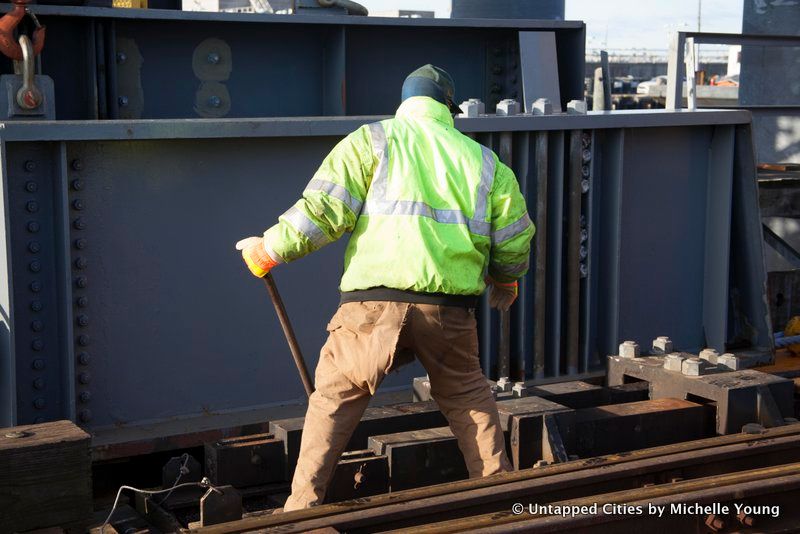
The ride takes 35 to 40 minutes and by crossing the Hudson River, the floats take trucks off the highways and give freight a more direct route between New York and New Jersey. More than 90% of goods in the New York region are moved by truck, with only 2% of New York City served by freight rail. The only other option to move freight by rail across the Hudson River is over the Alfred H. Smith Memorial Bridge up in Selkirk, New York, 140 miles north of New York City and 10 miles south of Albany – a three day trip by rail. Amtrak bans freight in its Hudson River tunnels. “This is the last mile,” says Hutton, “meaning, there has to be a local truck but it doesn’t have to be a long-haul truck ripping apart the highways and adding to the congestion.”
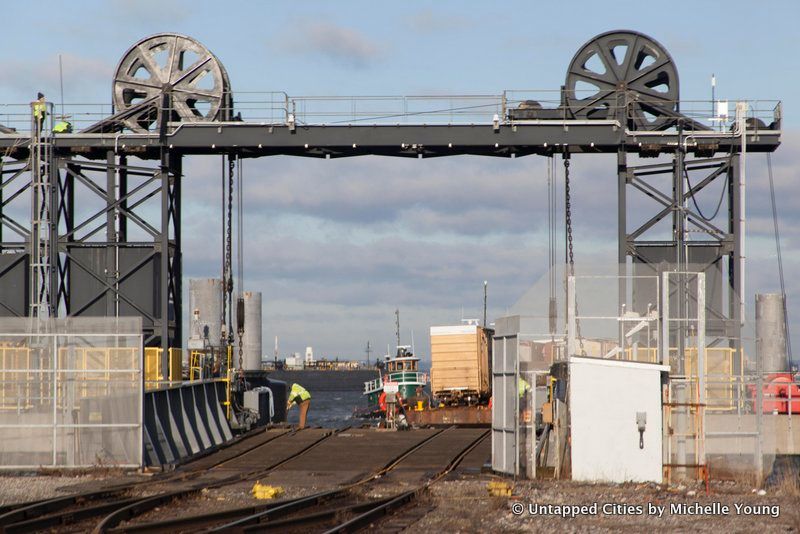
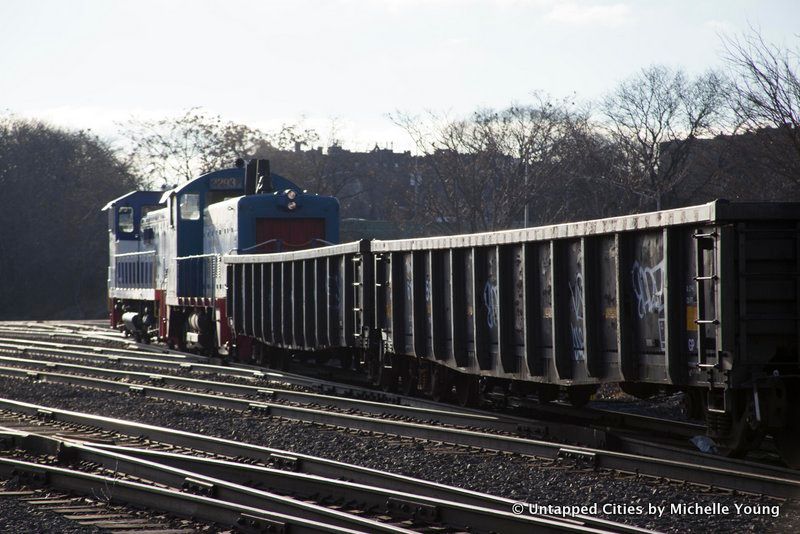
Two locomotives attached to two reacher cars
There are two timber and steel float bridges built in 2000, a modern version of the transfer bridges and gantries you still see around the New York waterfront. A locomotive pushes the freight cars onto the barge (which has train tracks) and a tugboat pulls the floating barge across the harbor, where it reaches another lift bridge and gets locked to it via a series of pins. From the rail yard, a locomotive (or two, as it is sometimes in winter) approaches the bridge with reacher cars that attach to the train cars on the float and bring them to land. To keep the barge balanced, only a partial line of cars on each track will come off at once, the work done in a particular order until all the cars are off the bridge. The new car floats will allow complete strings of cars to be removed at once, reducing loading times.
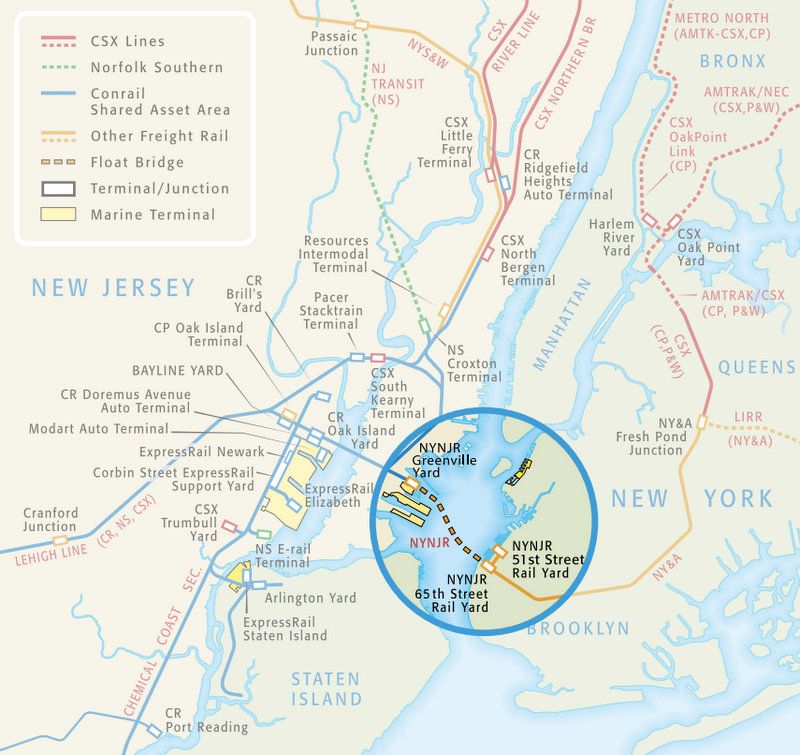
On our visit, due to windy weather patterns following a storm, two tugboats were guiding the barge on the way over from New Jersey, a rare occurrence. Goods come from not only the local New York City region but also from places as far as British Columbia and the Pacific Northwest. From the 65th Street Rail Yard, the freight heads onto the New York & Atlantic Railway to Fresh Pond Junction, where it can get on to the Long Island Railroad heading east or onto the CSX/Amtrak lines heading north over the Hell Gate Bridge and into the Bronx, where it can get onto the Amtrak North East Corridor or the Metro North lines. From Greenville, the freight connections once the cars get on Conrail are even more numerous as you can see in the map above, including materials that go onto cargo freighters at Port Newark-Elizabeth Marine Terminal. Within Brooklyn, New York New Jersey Rail also serves several spots on the Brooklyn waterfront: the 51st Street Rail Yard, the South Brooklyn Marine Terminal, New York City Transit’s rail yards at 36th-38th Street and SIMS. The trains go through the Brooklyn Army Terminal to reach the 65th Street Rail Yard.
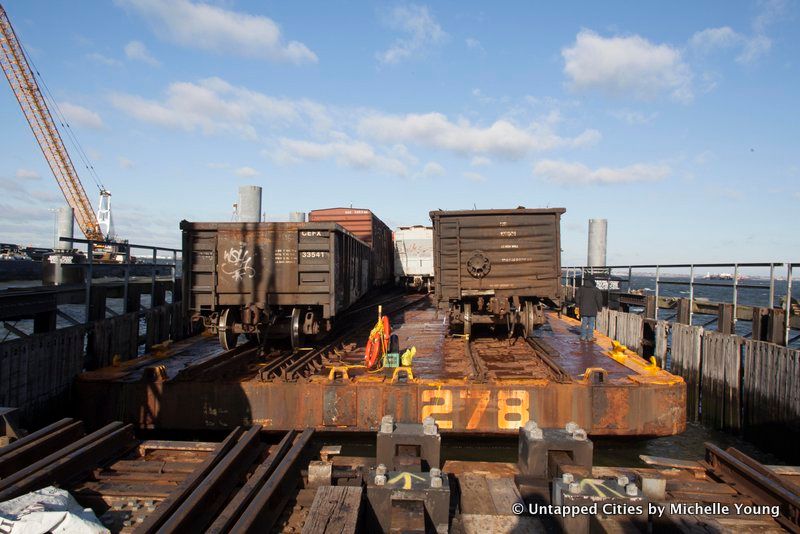
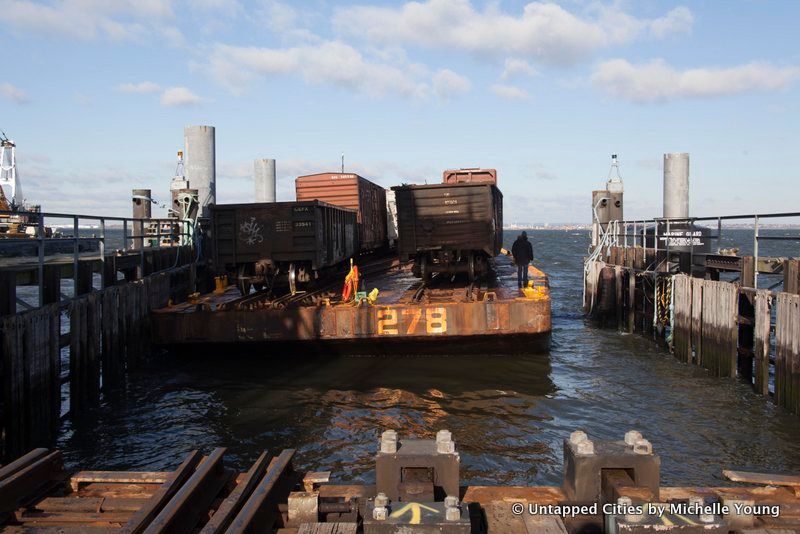
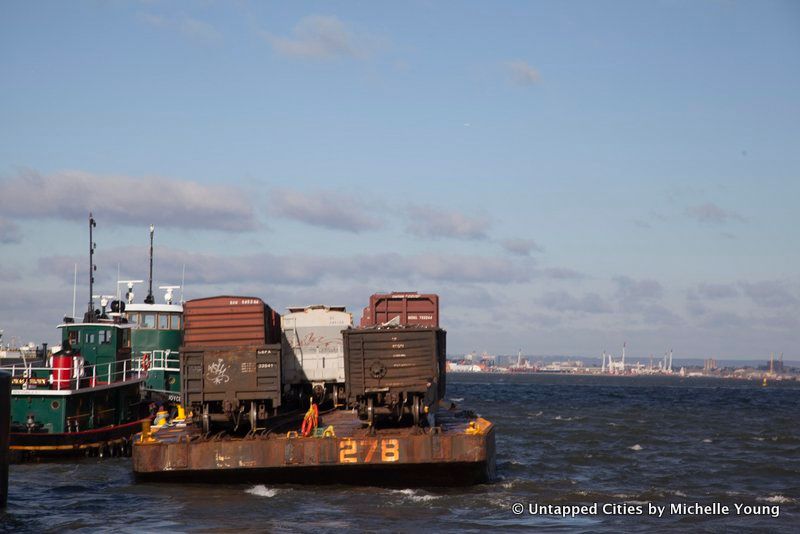
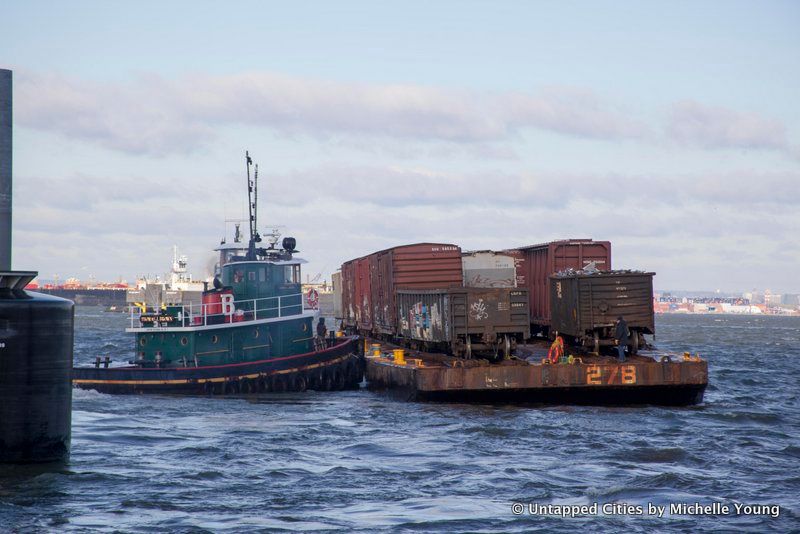
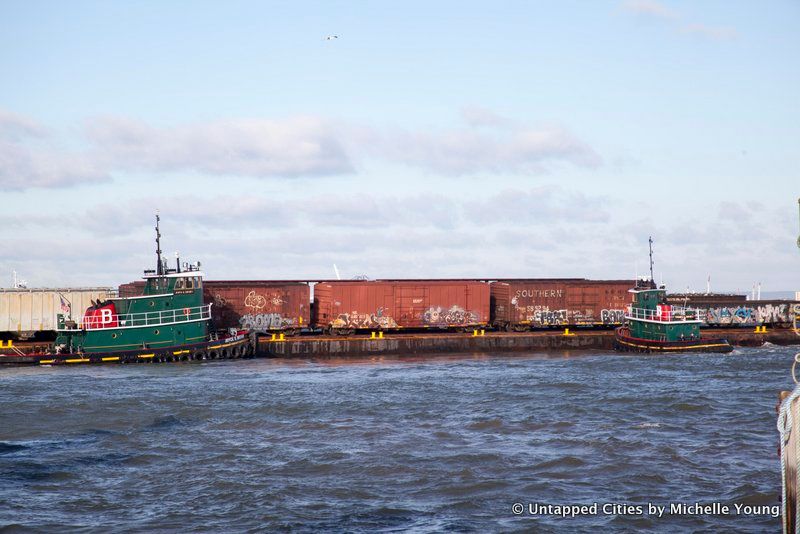
When the barge departs for a return trip back to Greenville, New Jersey, we watch as the two tugboats turn around the barge 180 degrees, providing a full sense of the length of the 14-car float. But changes are a foot, which the rail line staff is excited about. “With Port Authority’s investment into modernizing the operation, the locomotives, the car floats, we’re building a new transfer bridge in Greenville and redeveloping the yards to support that, we’re looking to grow this operation as a true second gateway for freight rail to get into the area,” says Brauner.
Last year, New York New Jersey Rail moved about 3400 railcars in 2016 across the Hudson, but with the expansion, the line will have a capacity of 24,000 rail cars per year. The new low-emissions locomotives have already arrived, the first new barge will arrive from South Carolina in April, the bridgework will be completed by the end of 2017, and the yard upgrades in Greenville will be completed in 2020. “This is the true southern gateway, a reliable route with service every day, multiple times a day,” concludes Brauner. With freight transportation predicted to to double by 2030, this sole rail link across the Hudson River will be more important than ever.
Next, check out the Top 10 Secrets of the Brooklyn Army Terminal.
Subscribe to our newsletter